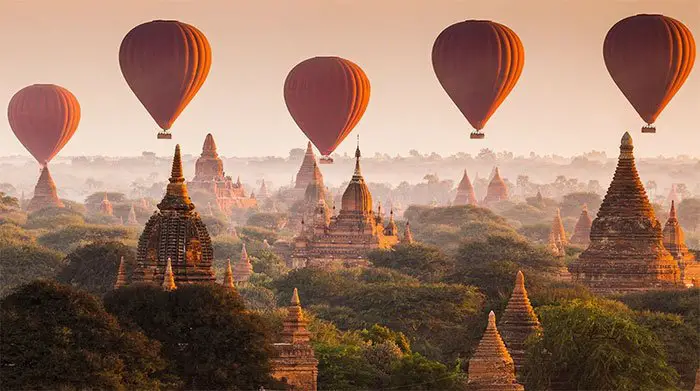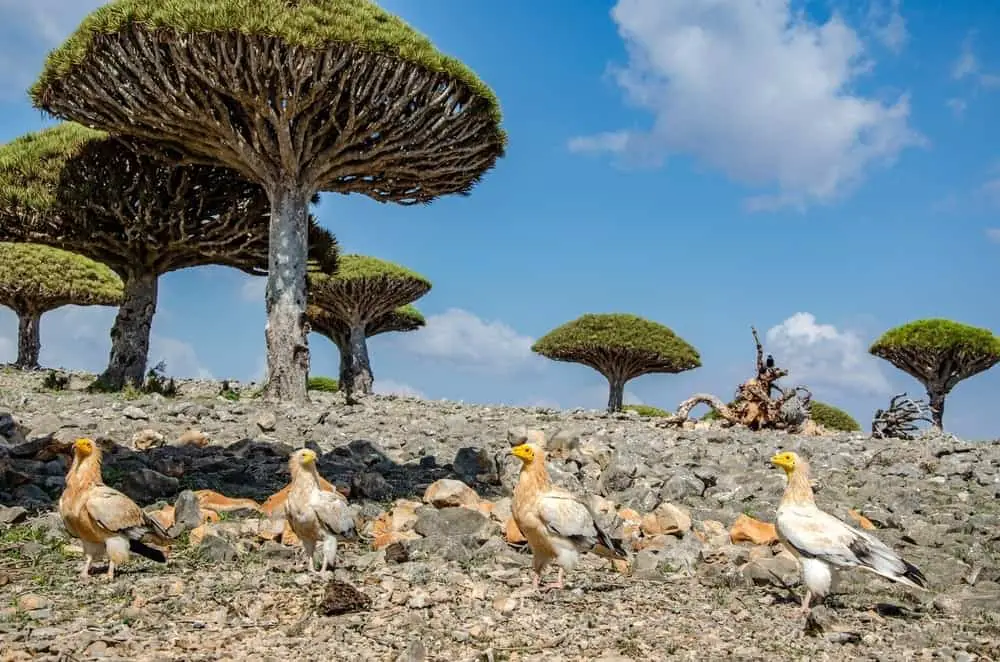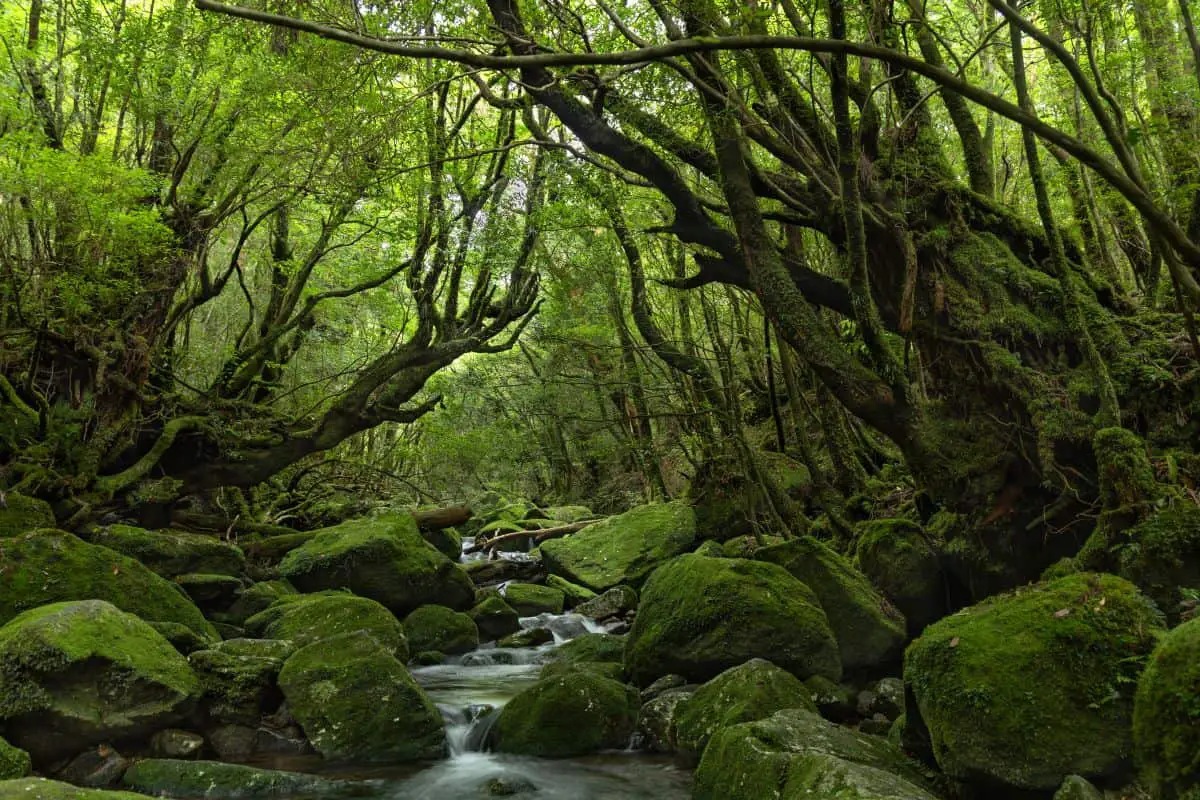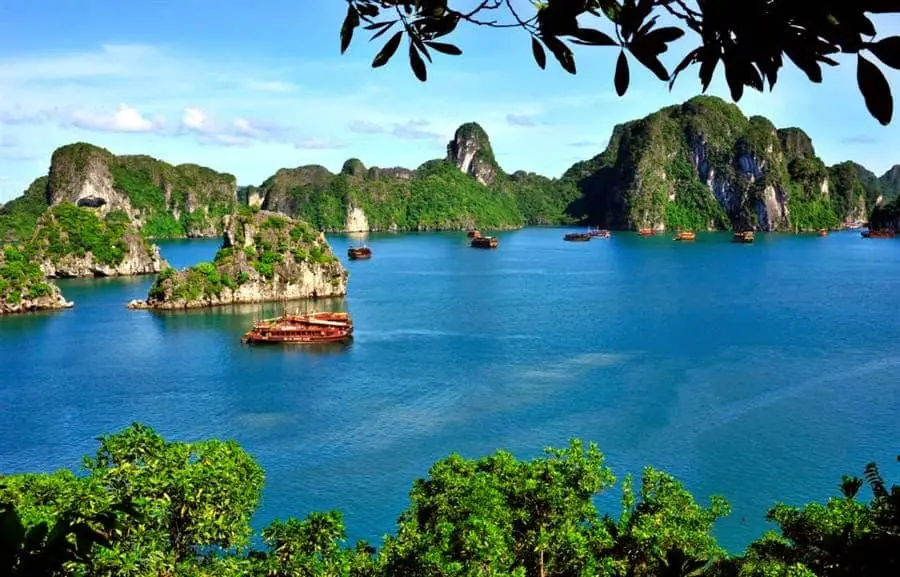Explore Asia’s beauty with our list of the top 10 UNESCO World Heritage Sites. From ancient temples to natural wonders, these sites are a visual feast. Discover the cultural and historical treasures that make Asia a must-visit destination. Dive into the essence of each site, blending history, architecture, and natural splendor. Your journey to these UNESCO gems starts here!
Thank you for reading this post, don't forget to subscribe!Top 10 Natural wonders in Asia
1. Huangshan Mountain (China)
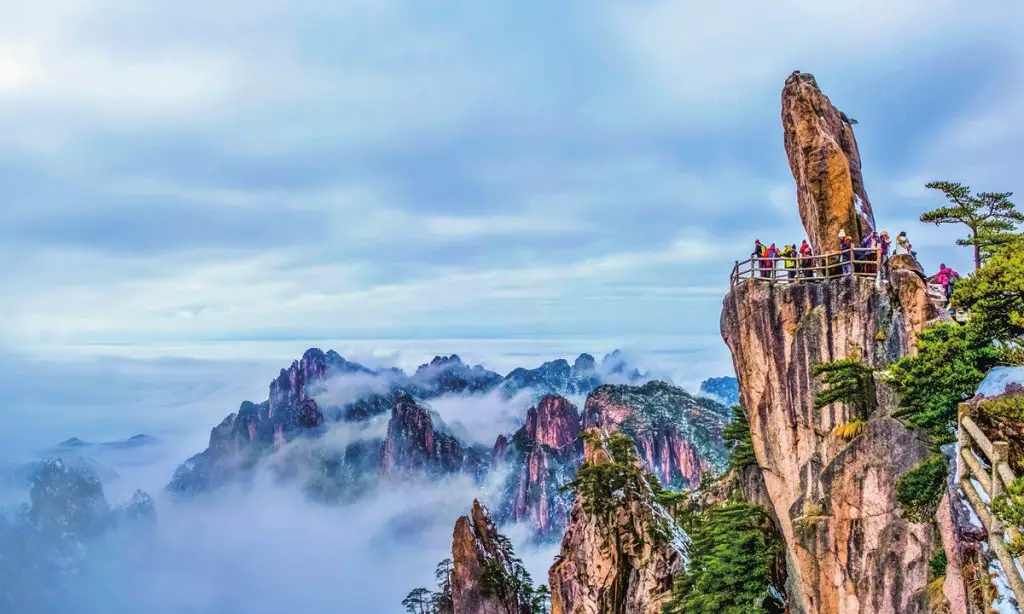
Huangshan Mountain, located in the Anhui province of China, is a UNESCO World Heritage Site renowned for its breathtaking natural beauty and cultural significance. Often referred to as the Yellow Mountains, Huangshan has been a source of inspiration for countless poets, artists, and writers throughout Chinese history.
The mountain range is characterized by its iconic granite peaks, ancient pine trees, and mystical seas of clouds, creating a landscape that seems straight out of a traditional Chinese ink painting. The granite peaks, some resembling animals or mythical creatures, contribute to the ethereal charm of Huangshan.
Numerous ancient temples, stone archways, and bridges are scattered throughout the mountain, adding a cultural dimension to its natural splendor. The Xihai Grand Canyon, a deep and winding gorge, offers awe-inspiring views of the surrounding peaks, while the renowned “Welcoming Pine” and “Guest-Greeting Pine” are iconic landmarks.
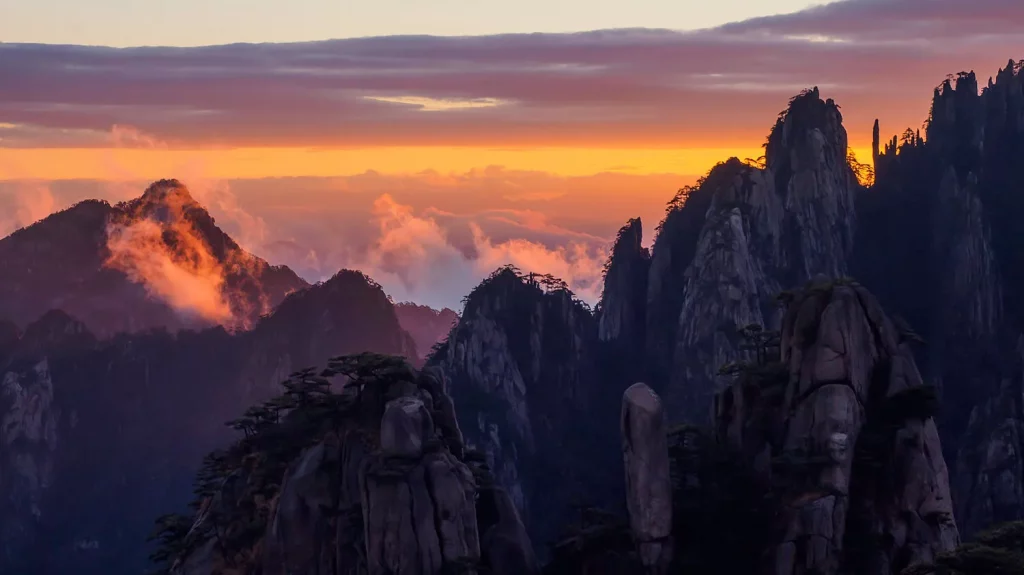
Sunrises and sunsets at Huangshan are particularly magical, with the changing colors of the sky casting a surreal glow on the landscape. The experience of watching the sunrise from the summit, especially from locations like the Cloud Dispelling Pavilion, is considered a spiritual and rejuvenating journey.
Huangshan’s cultural significance is heightened by its association with traditional Chinese art and literature. Poems and paintings depicting the mountain’s beauty abound in Chinese culture, solidifying its status as one of China’s most revered natural wonders. Huangshan is not just a mountain; it’s a living masterpiece, inviting travelers to immerse themselves in the beauty of both nature and cultural heritage.
2. Banaue Rice Terraces (Philippines)
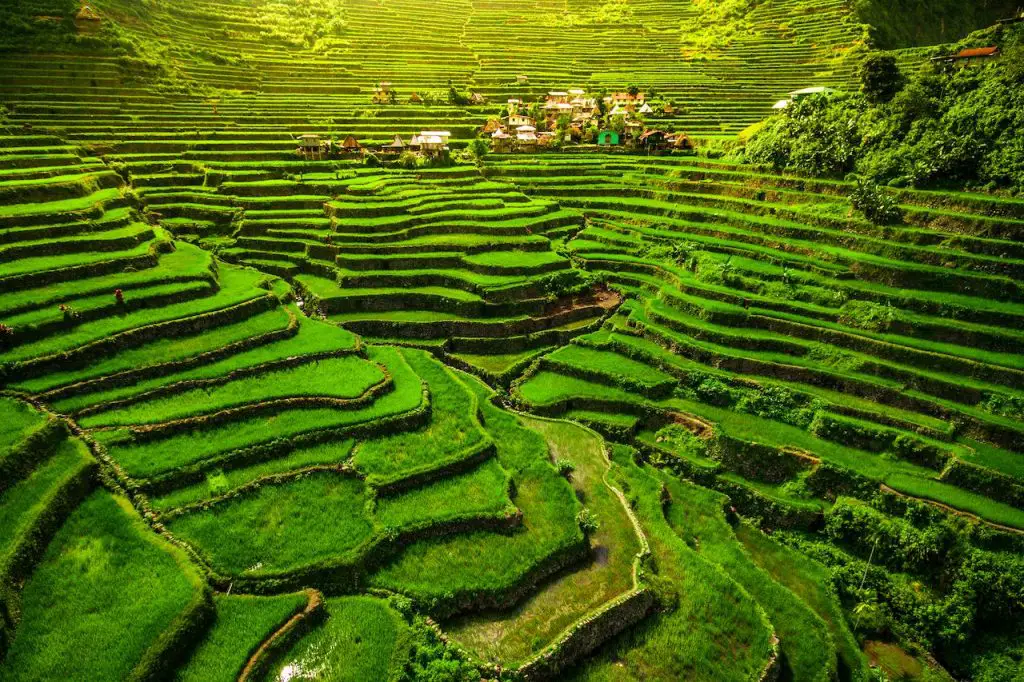
The Banaue Rice Terraces, situated in the Cordillera Central of the Philippines, stand as a unique architectural marvel, marked by the extraordinary tiered rice fields. Crafted over 2,000 years ago by the Ifugao farmers, this rice terrace system is not only a magnificent work of art but also an icon of human creativity and resilience.
The towering terrace steps ascend the mountainside, creating a breathtaking natural landscape. What sets this apart is that these construction techniques were executed by hand, without the use of any special tools, relying solely on the skill and expertise of local farmers.
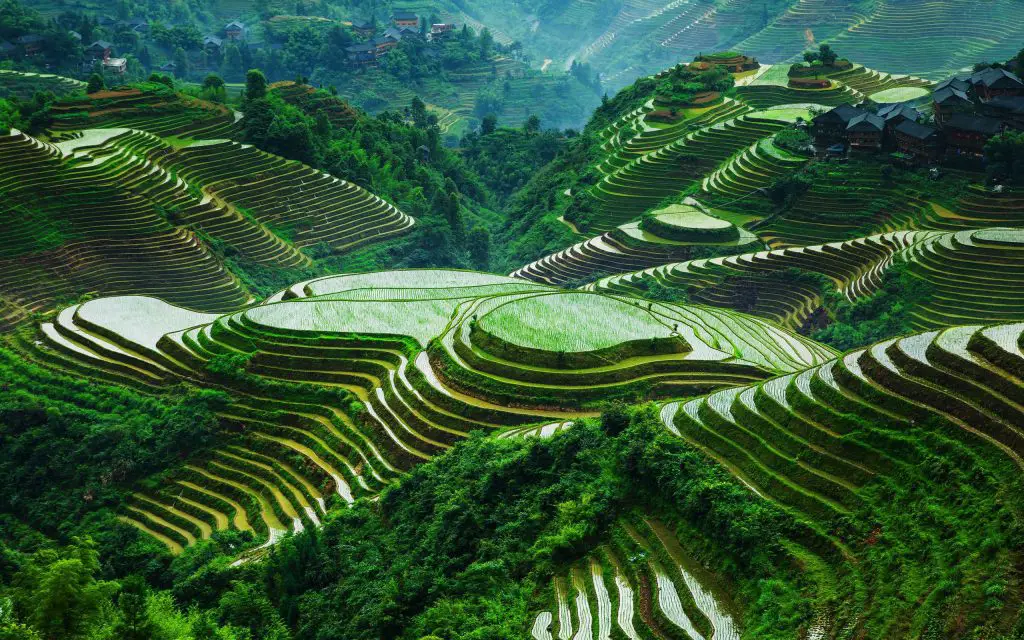
Banaue Rice Terraces captivates visitors with its stunning natural beauty and the marvel of human ingenuity. Recognized by UNESCO as a World Cultural Heritage, it is an ideal destination for those seeking to explore the unique culture and history of the Philippines and to revel in an ideal backdrop for photography enthusiasts.
3. Angkor Archaeological Park (Cambodia)

Angkor Archaeological Park, located in Siem Reap, Cambodia, is a testament to the grandeur of the Khmer Empire that flourished from the 9th to the 15th century. Encompassing a vast area of approximately 400 square kilometers, the park is home to the remains of several majestic temples, including the renowned Angkor Wat, Bayon, and Ta Prohm.
Angkor Wat, the largest religious monument globally, is an architectural masterpiece, reflecting the Hindu-Buddhist fusion prevalent during the Khmer Empire. The Bayon Temple, with its iconic stone faces, stands as a symbol of Mahayana Buddhist devotion, while Ta Prohm, entwined with tree roots, offers a mystical and captivating atmosphere.
The intricate carvings, imposing structures, and religious significance make Angkor a UNESCO World Heritage Site, attracting millions of visitors annually. Beyond the temples, the park features intricate hydraulic structures, reservoirs, and causeways, showcasing the Khmer people’s advanced engineering skills.

Exploring Angkor Archaeological Park is like stepping into a historical treasure trove, where every stone tells a tale of a bygone era. It serves as a living testament to the artistic, cultural, and architectural achievements of the Khmer civilization, leaving an indelible mark on world history and heritage.
4. Ha Long Bay (VietNam)

Ha Long Bay, located in the northern part of Vietnam, is a mesmerizing natural wonder renowned for its emerald waters and thousands of limestone karsts and islets that jut dramatically from the sea. This UNESCO World Heritage Site, often shrouded in mist, creates an ethereal and otherworldly ambiance.
The bay, meaning “Descending Dragon” in Vietnamese folklore, is steeped in legend. It is said that the karsts were formed by dragons spitting jewels into the sea to protect the area from invaders. This mythical tale adds to the enchantment of Hạ Long Bay.
Cruising through the bay unveils a panorama of picturesque landscapes, hidden grottoes, and floating fishing villages. The towering limestone pillars, adorned with lush greenery, create a stunning contrast against the azure waters. Visitors can explore mystical caves, such as Sung Sot Cave, with its intricate stalactite formations.

Hạ Long Bay is not only a natural masterpiece but also a cultural treasure. The bay has been inhabited by local communities for centuries, contributing to its rich cultural and historical significance. A visit to Hạ Long Bay is a journey into both the mythical past and the breathtaking beauty of the present, making it a must-see destination in Vietnam.
5. Historical center of Bukhara (Uzbekistan)

The Historical Center of Bukhara, situated in Uzbekistan, is a living testament to the city’s rich history and cultural heritage. Recognized as a UNESCO World Heritage Site, this ancient city has stood for over two millennia, serving as a significant center along the Silk Road.
Bukhara’s historical core is a captivating mosaic of well-preserved monuments, reflecting the various civilizations that have left their mark on the city. The Ark of Bukhara, an ancient fortress dating back to the 5th century, stands as a symbol of the city’s resilience. The Po-i-Kalyan complex, comprising the Kalyan Mosque, Kalyan Minaret, and Miri-Arab Madrasa, showcases the architectural grandeur of Bukhara’s Islamic heritage.
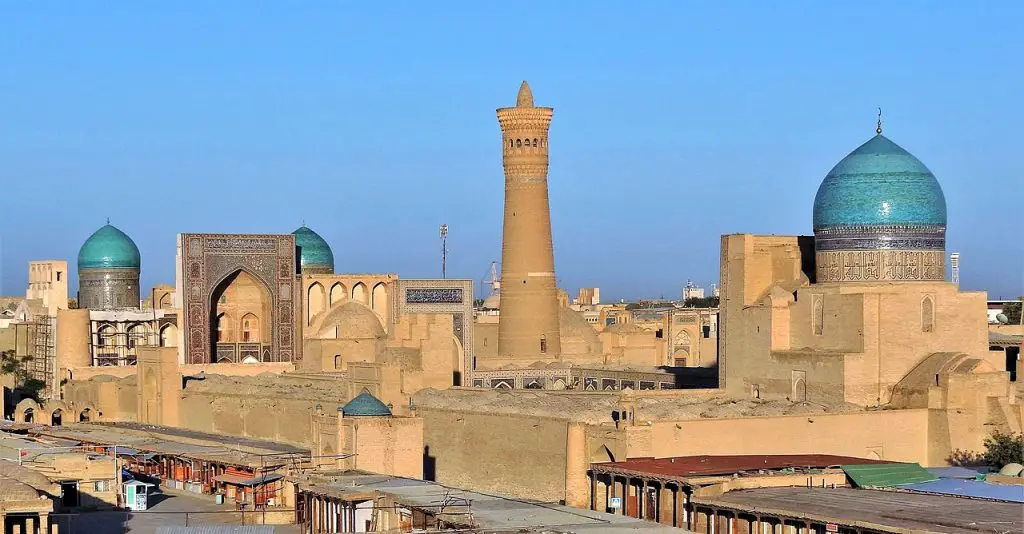
The city’s intricate layout of narrow streets, courtyards, and bustling bazaars adds to its charm. The Lyab-i Hauz architectural ensemble, with its pool surrounded by madrasas and a khanaka, provides a serene oasis in the heart of the old city.
Bukhara’s Historical Center preserves the essence of its past, making it a captivating destination for those seeking to delve into the history, art, and culture of Central Asia. The architectural marvels and cultural significance of this UNESCO site make it a key player in the narrative of human civilization.
6. Kyoto Historical Site (Japan)

Kyoto, Japan, is a city steeped in history and cultural significance, boasting an array of historical sites that reflect the country’s rich heritage. As the former imperial capital for over a millennium, Kyoto is a treasure trove of traditional architecture, sacred temples, and serene gardens.
One of Kyoto’s iconic landmarks is the Fushimi Inari Taisha, known for its vibrant red torii gates that lead to the Fushimi Inari Shrine. This spiritual site is dedicated to Inari, the Shinto god of rice and prosperity, and attracts millions of visitors each year.
The Kinkaku-ji, or Golden Pavilion, is another jewel in Kyoto’s historical crown. Covered in gold leaf, this Zen Buddhist temple is set amidst exquisite gardens, creating a scene of unparalleled beauty.
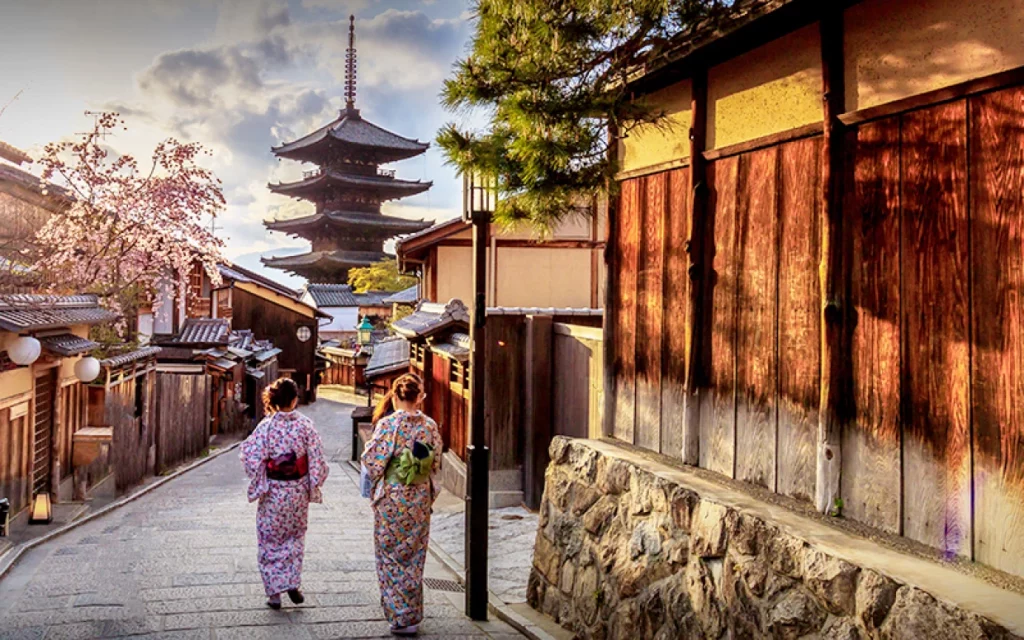
Kyoto’s Gion district, with its well-preserved machiya (traditional wooden townhouses), provides a glimpse into the city’s historical charm. The district is renowned for its traditional teahouses, geisha performances, and the historic Yasaka Shrine.
The Kyoto Historical Site is a harmonious blend of ancient and modern, showcasing the city’s commitment to preserving its cultural identity. From the grandeur of imperial palaces to the tranquility of moss-covered gardens, Kyoto offers a captivating journey through Japan’s storied past.
7. Great Wall (China)

The Great Wall of China, one of the most iconic structures in human history, winds majestically across northern China, stretching over 13,000 miles. Built over several dynasties, including the Ming Dynasty, it stands as a symbol of China’s rich history and engineering prowess.
This colossal defensive fortification was constructed to protect against invasions from nomadic tribes, and it traverses diverse landscapes, from mountains to deserts. The wall consists of watchtowers, beacon towers, and garrison stations strategically placed along its length, showcasing the military ingenuity of its builders.
Mutianyu and Badaling are among the most popular sections for tourists, providing awe-inspiring views of the wall snaking through the picturesque countryside. The wall’s significance goes beyond its military function, serving as a cultural and architectural marvel that reflects the determination and unity of the Chinese people.

Declared a UNESCO World Heritage Site, the Great Wall attracts millions of visitors annually, offering a glimpse into China’s ancient history and unparalleled vistas. As a testament to human achievement, the Great Wall remains a symbol of strength and resilience, drawing admiration from people around the world.
8. Golden Temple of Dambulla (Sri Lanka)

The Golden Temple of Dambulla, also known as the Dambulla Cave Temple, stands as a radiant testament to Sri Lanka’s cultural and religious heritage. Nestled on a colossal granite outcrop in the central part of the island, this UNESCO World Heritage Site comprises a complex of cave temples adorned with intricate murals and over 150 statues of the Buddha.
Dating back to the 1st century BCE, the site has evolved over the centuries, with its most significant expansions and renovations occurring under the patronage of various Sri Lankan kings. The five sanctuaries within the caves house a remarkable collection of Buddha images, including a 14-meter-long reclining Buddha that exudes a sense of serenity.

The cave walls and ceilings are adorned with vividly colored frescoes, depicting scenes from the life of the Buddha and other religious narratives. The Golden Temple’s cultural significance extends beyond its religious importance, offering a glimpse into the artistic and architectural achievements of ancient Sri Lanka.
Perched atop a hill, the Golden Temple of Dambulla provides panoramic views of the surrounding landscape. Pilgrims and visitors alike are drawn to the site, not only for its religious sanctity but also for the awe-inspiring fusion of art, history, and spirituality that permeates this sacred enclave.
9. Ancient capital of Bagan (Myanmar)

The ancient capital of Bagan, situated on the banks of the Ayeyarwady River in Myanmar, is an extraordinary archaeological wonder that transports visitors back in time. Flourishing between the 9th and 13th centuries, Bagan was the capital of the Pagan Kingdom, and today, it remains a captivating landscape dotted with over 2,000 well-preserved temples and pagodas.
The temples, constructed from bricks and adorned with intricate carvings and frescoes, showcase the architectural prowess and artistic brilliance of the ancient Burmese people. The Ananda Temple, with its elegant spires and serene Buddha statues, stands as one of the most iconic structures in Bagan.
At sunrise and sunset, the Bagan skyline transforms into a mesmerizing panorama, as the sun bathes the temples in a warm golden glow. Visitors often climb to the upper terraces of the temples to witness this magical spectacle, creating an experience that is both spiritual and visually stunning.

Designated as a UNESCO World Heritage Site, the ancient capital of Bagan is a treasure trove for history enthusiasts and spiritual seekers alike. Its rich history, combined with the serene beauty of its temples, makes Bagan an unparalleled destination, offering a glimpse into the grandeur of Myanmar’s past.
10. Jaipur city (India)

Jaipur, often referred to as the “Pink City,” is a captivating destination in the Indian state of Rajasthan, renowned for its rich history, vibrant culture, and architectural marvels. Founded by Maharaja Sawai Jai Singh II in 1727, the city is a testament to the grandeur of Rajputana architecture and urban planning.
The iconic Hawa Mahal, or Palace of the Winds, is a distinctive structure with its honeycomb of windows, allowing royal ladies to observe street festivities while remaining unseen. The City Palace, a complex of courtyards, gardens, and palaces, stands as a royal residence showcasing a fusion of Mughal and Rajput styles.
Jaipur’s astronomical observatory, Jantar Mantar, is a UNESCO World Heritage Site, featuring a collection of architectural instruments designed for precise observations. The Amber Fort, perched on a hill, is another jewel in Jaipur’s crown, offering panoramic views of the surrounding landscape.
The bustling bazaars of Jaipur, with their colorful textiles, jewelry, and handicrafts, provide a vibrant tapestry of the city’s cultural heritage. Jaipur is not just a historical marvel but a living city, where ancient traditions coexist with modernity, making it a must-visit destination for those seeking an immersive experience in India’s royal history and vibrant culture.

